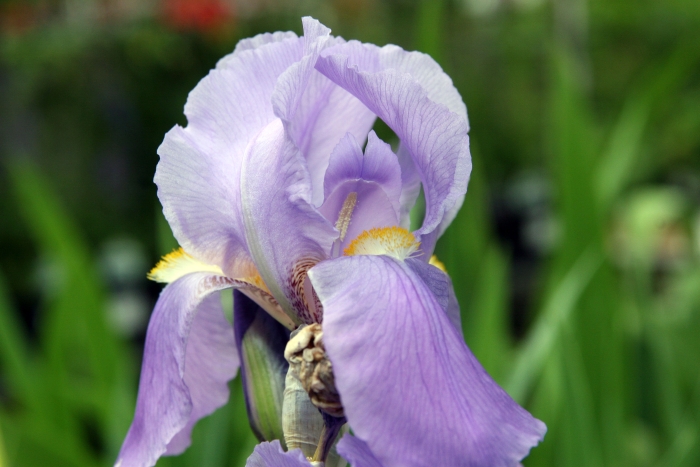Dalmatian Iris
(Iris pallida)
Dalmatian Iris (Iris pallida)
/
/

Photo by David J. Stang
CC BY-SA 4.0
Image By:
Photo by David J. Stang
Recorded By:
Copyright:
CC BY-SA 4.0
Copyright Notice:
Photo by: Photo by David J. Stang | License Type: CC BY-SA 4.0 | License URL: https://creativecommons.org/licenses/by-sa/4.0 | Uploader: David Stang | Publisher: Wikimedia Commons | Title: Iris_pallida_Albo_Variegata_4zz.jpg | Notes: Description: ''Physostegia virginiana'' (obedient plant, false dragonhead) Photograph by: Britt Slattery, U.S. Fish and Wildlife Service Chesapeake Bay Field Office, Annapolis, MD 21401. Source: [http://www.nps.gov/plants/pubs/chesapeake/plan















































Estimated Native Range
Summary
Iris pallida, commonly known as the Dalmatian iris, is a hardy perennial herb native to the Dalmatian coast of Croatia and widely naturalized elsewhere, particularly in rocky limestone areas and coastal regions. It typically grows from a rhizome and reaches a stem height of 20-31 inches (50-80 cm). The Dalmatian iris is known for its sword-like leaves and pale purplish to whitish flowers that bloom in May and June. The flowers are highly fragrant and are considered quite showy, making them a popular choice for gardens.
The Dalmatian iris is valued not only for its ornamental beauty but also for its essential oils, which are extracted from the rhizomes and used in perfumery and as flavoring agents. In cultivation, it thrives in full sun to part shade and prefers well-drained soils, although it can tolerate drought once established. It is commonly used in borders, rock gardens, and as a fragrant addition to herb gardens. While generally disease-resistant, Iris pallida can be susceptible to iris borer and root rot if grown in poorly drained soils.CC BY-SA 4.0
The Dalmatian iris is valued not only for its ornamental beauty but also for its essential oils, which are extracted from the rhizomes and used in perfumery and as flavoring agents. In cultivation, it thrives in full sun to part shade and prefers well-drained soils, although it can tolerate drought once established. It is commonly used in borders, rock gardens, and as a fragrant addition to herb gardens. While generally disease-resistant, Iris pallida can be susceptible to iris borer and root rot if grown in poorly drained soils.CC BY-SA 4.0
Plant Description
- Plant Type: Herb
- Height: 2-3.3 feet
- Width: 1.6-3.3 feet
- Growth Rate: Moderate
- Flower Color: Blue, Purple
- Flowering Season: Spring, Summer
- Leaf Retention: Deciduous
Growth Requirements
- Sun: Full Sun, Part Shade
- Water: Medium
- Drainage: Medium
Common Uses
Border Plant, Deer Resistant, Drought Tolerant, Fragrant, Low Maintenance, Street Planting
Natural Habitat
Rocky limestone areas and coastal regions of the Dalmatian coast
Other Names
Common Names: Fragrant Iris , Sweet Iris , Fragrant-Root Iris , Orris , Íris
Scientific Names: Iris pallida , Iris pallida f. illyrica , Iris pallidecaerulea , Iris ×germanica subsp. pallida , Iris ×pallide-caerulaea
GBIF Accepted Name: